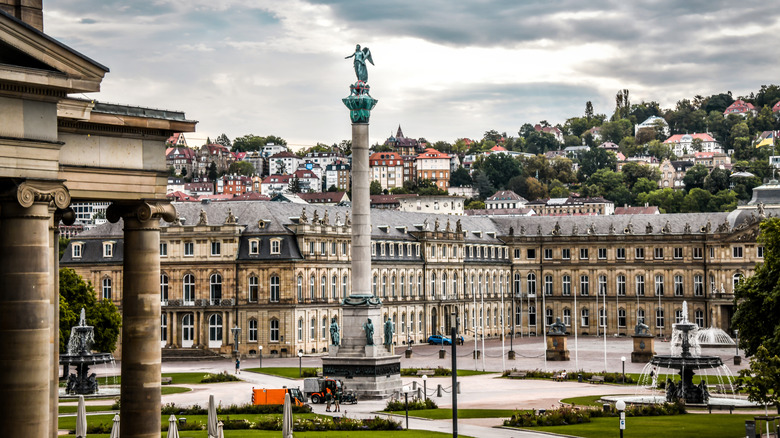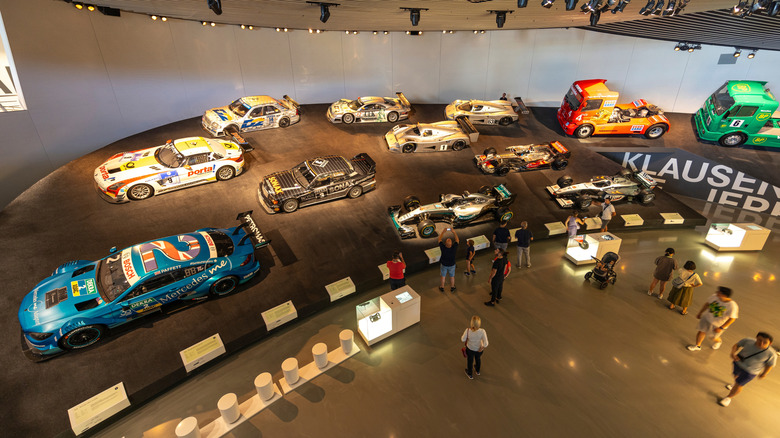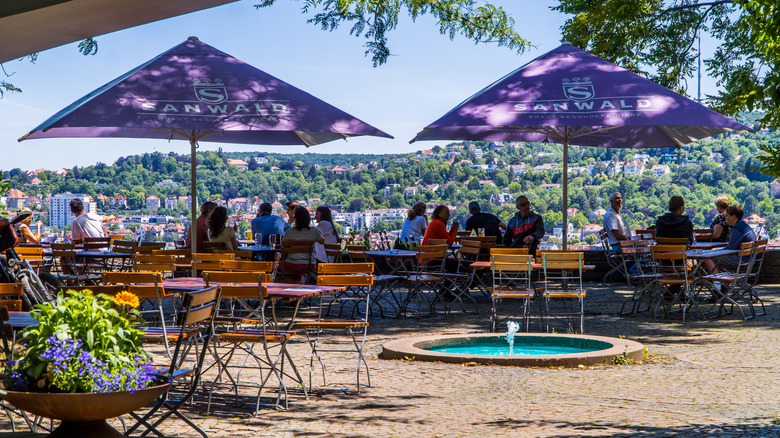One Of The World's Most Walkable Cities Is An Underrated European Haven Of Culture, Food, Parks, And Art
While Frankfurt or the enigmatic Black Forest often snag the spotlight in the western region of Germany, Stuttgart is an underrated gem. The city is known for its cultural and artistic offerings, rolling parks, impeccable wine, bustling food market, beer gardens, and an illustrious automotive industry that fuels the city's reputation as "the perfect combination of culture and cars."
One of the best destinations you shouldn't skip on a trip to Germany, Stuttgart thrives on contradictions: centuries-old architecture stands alongside modern buildings, urban centers segue into parks, and tech-forward companies coexist with time-honored wine producers. While it famously hosts the headquarters of Mercedes-Benz and Porsche, Stuttgart is also surprisingly walkable and is often ranked highly among the world's most walkable cities.
Schlossplatz Square is the city's historic center, home tomany culturally significant sites. Just 15 minutes away are rolling vineyards that produce bottles of bright white and robust red wines. Artistic and cultural events, beer and wine festivals, and concerts take place throughout the year in Stuttgart.
Within Europe, trains are arguably the best way to travel into Stuttgart, such as the Deutsche Bahn high-speed trains from major German and European cities. The main Hauptbahnhof railway station is centrally located, but is undergoing major construction that will not be complete until late 2026. The Stuttgart Airport is a 30-minute journey from the city by train or tram, and around 25 minutes by car.
The historic and contemporary sites of Stuttgart
Stuttgart's breathtaking Neues Schloss, orNew Castle, is one of the city's most recognizable landmarks. The surrounding grounds of Schlossplatz Square are where most of the city's events take place, including one of the most famous annual Christmas markets in Germany. It's a short walk from here to the Altes Schloss, or Old Castle, reconstructed to its former glory after it was partially destroyed by fires and bombings. Initially a fortress and royal residence, it now hosts the Württemberg State Museum. Walk over to Stiftskirche, a Protestant church dating back to 1240 that showcases a blend of Roman and Gothic architectural influences. Bask in ballet, opera, and theater at the Staatsoper Stuttgart, or State Opera, one of the most renowned opera houses in Europe.
The city's more recent builds are equally as compelling to visit. It goes without saying that dropping by the Mercedes-Benz and Porsche museums is a must for tourists — car fanatics or not — for the curated displays of their iconic vehicles. The sleek car museums complement the modern silhouette of the Kunstmuseum, a glass cube housing a vast collection of contemporary art. The Staatsgalerie, or New State Gallery, is one of Germany's best museums, home to many centuries worth of art from the Middle Ages to the modern times. Don't miss the extremely photogenic Stadtbibliothek, if only to admire four floors of book-lined walls from every angle and enjoy city views from the top floor coffee shop.
Stuttgart's parks and staircases
The Green U — five miles of connected parks and greenery that stretch from the Palace gardens to the northwest — rightfully earns Stuttgart its reputation as one of Germany's greenest cities. Traversing the pathways and pedestrian bridges makes for an uninterrupted and easygoing hike. Be sure to visit the lush landscapes of Rosensteinpark, Liebfried's Gardens, and the Wartberg, before concluding your stroll at the beautiful Killesberg Hill Park.
Cradled between wine-producing hills of exceptional terroir, the city is surrounded by vineyards which practically spill into the city center. Since the 12th century, winegrowers accessed their vineyards by a series of staircases called Stäffeles. Wine terrain gave way to urban expansion, but over 500 staircases remained, now woven into the city's character. Spanning different lengths and totaling 12.4 miles, these stairways are a great way to explore the city. The Willy-Reichert-Staffel is popular for the magnificent views over Stuttgart — and the Karlshöhe beer garden that awaits at the top.
Such treks can work up an appetite, so head over to Market Hall, an indoor market located in a historic Art Nouveau building selling international and local produce and specialty foods. Restaurants, artisanal boutiques, and wine bars can be found at the Bohnenviertel district, a 15-minute walk from Schlossplatz Square. And if an afternoon of shopping is in your itinerary, Stuttgart's longest shopping street Königstrasse fits the bill. Far from being one of the most "overtouristed" places in Europe, Stuttgart has lots to offer for those seeking slow travel. The city is particularly fetching in May, when spring weather prompts the city's gardens to bloom — the perfect backdrop for fully appreciating Stuttgart's walkability.


